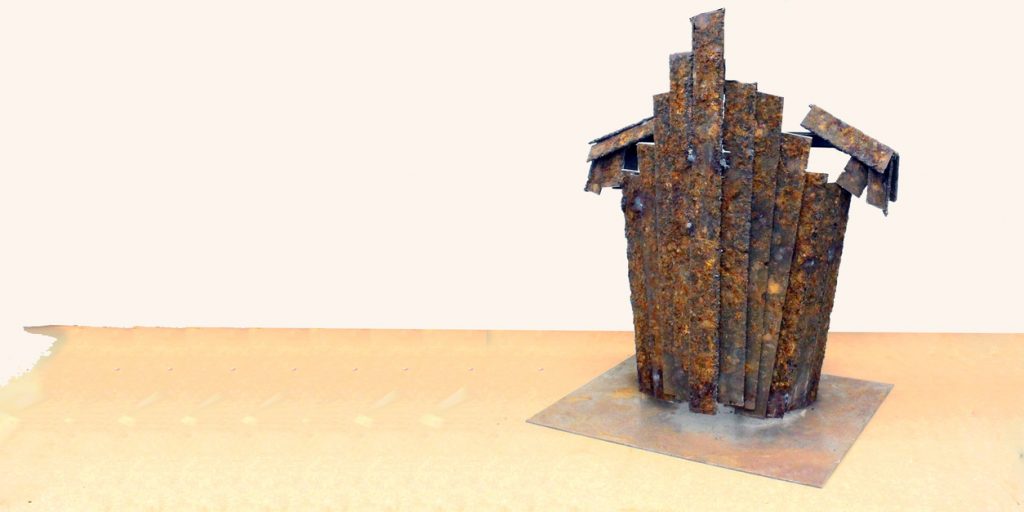While reading Homer’s “Odyssey”, I began interpreting it in retrospect to my four-year experience in university and how it represents this crucial transition from childhood to adulthood. I began looking for myself in Odysseus whose journey appeared to me as a search within himself and his identity rather than an attempt to return to his homeland. These works are therefore an interpretation of some of the episodes that appear in the epic poem but through the emphasis on this crucial part of human experience and the themes that come along with it such as nostalgia, oblivion, love, struggle, confusion, and retrospection.


“Οδυσσέας/Odysseus” This piece is a representation of the protagonist of the epic poem, Odysseus. Throughout his journey, he is able to fully embody his wittiness and genius, while his identity as a warrior transforms into the identity of a mindful and wise man, whose experiences and knowledge exceed his physical strength.

“Νέκυα/Nekya” This work references Odysseus’s descent to Hades, the world of the dead, which in the “Odyssey” is presented with the title Nekya. There, Odysseus meets several epic mythological heroes, of which the most significant were his mother Anticlea, Achilles, and Teiresias. Anticlea’s tragic presence in Hades is a symbol of the maternal bond and the purity in such love since she preferred to deny life than live the rest of her life in pain and agony in the absence of her child. Achilles appears in Hades as a symbol of all the human basic instincts, while the epic hero confines in Odysseus his grief and regret to sacrifice his human life in exchange for his heroic reputation. His expression of his fear, agony, and grief suddenly transforms the epic war hero into this ordinary man who is bound to his own mortality. Lastly, Teiresius’s presence is most significant as he is Odysseus’s last chance to return to his homeland, symbolizing hope. All these mythical figures appear as a reminder to the reader of the essence of the human experience and agony, the need to survive, live, and love until we are met with the inevitable.

“Κίρκη/Circe” This work references the figure of Circe, who is a significant figure in the Odyssey. To my interpretation, Circe is a symbol of selflessness and romanticism, while the purity in her love for Odysseus allows her to deny her own loneliness and eternal happiness as well as her nature as a nymph who is meant to transform mortals into swine as well as deny. She decided to help Odysseus to return to his homeland at the expense of losing her lover and companion.

“Ιθάκη/Ithaca” This work is supposed to be some sort of a relic for Odysseus. His armor is a piece of his identity as a warrior, traveler, wanderer, and human; one that has undergone extreme challenges and emotional and physical pressure. It is a symbol of protection and one that remained consistent throughout his journeys. It is also, however, one that is to be removed and thus it also symbolizes the conclusion in Odysseus’ journey.
